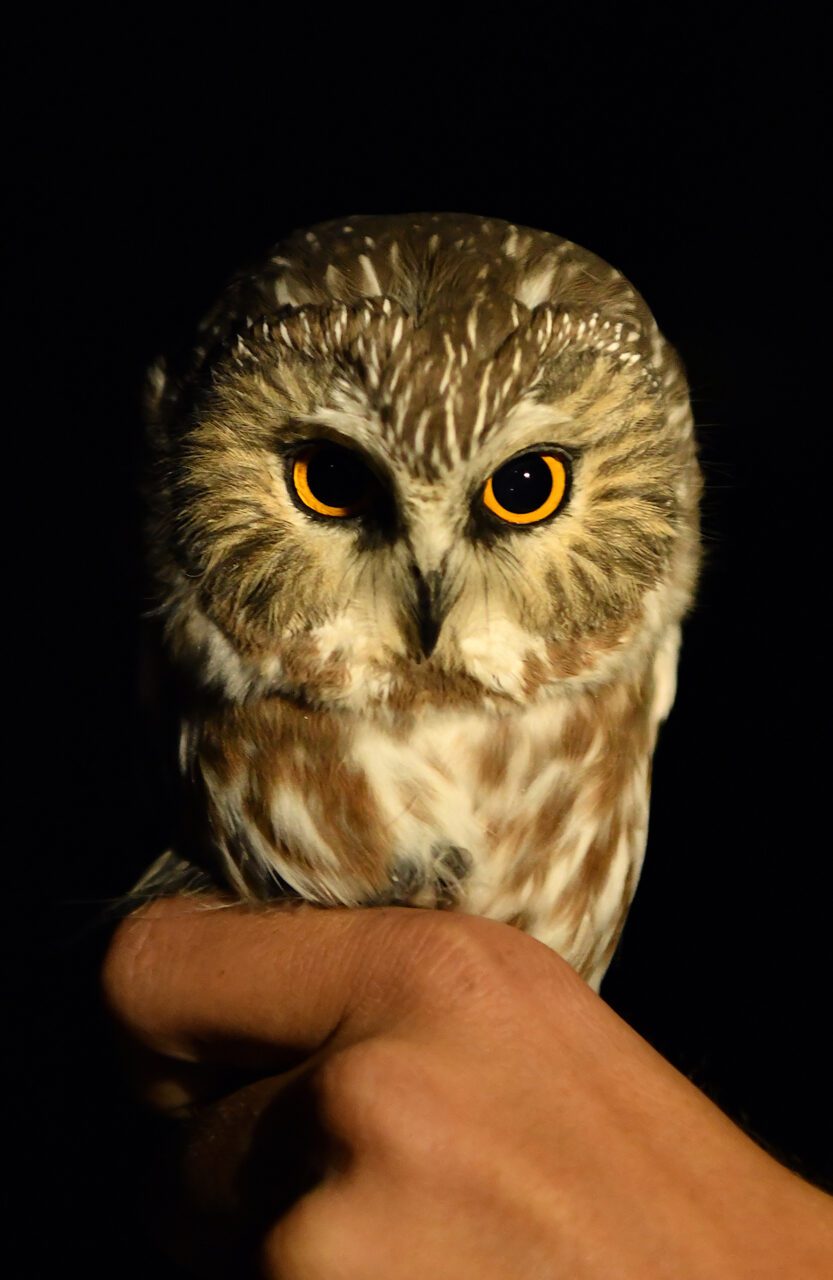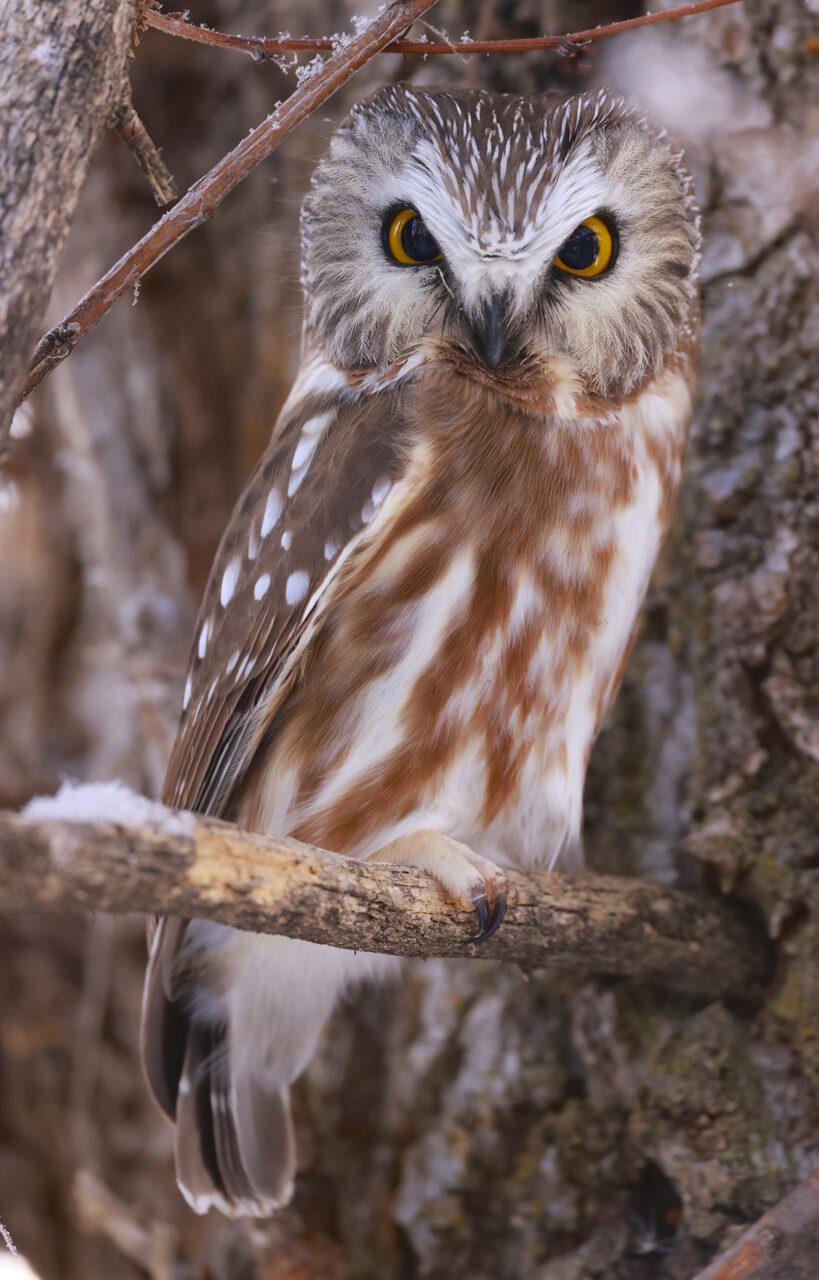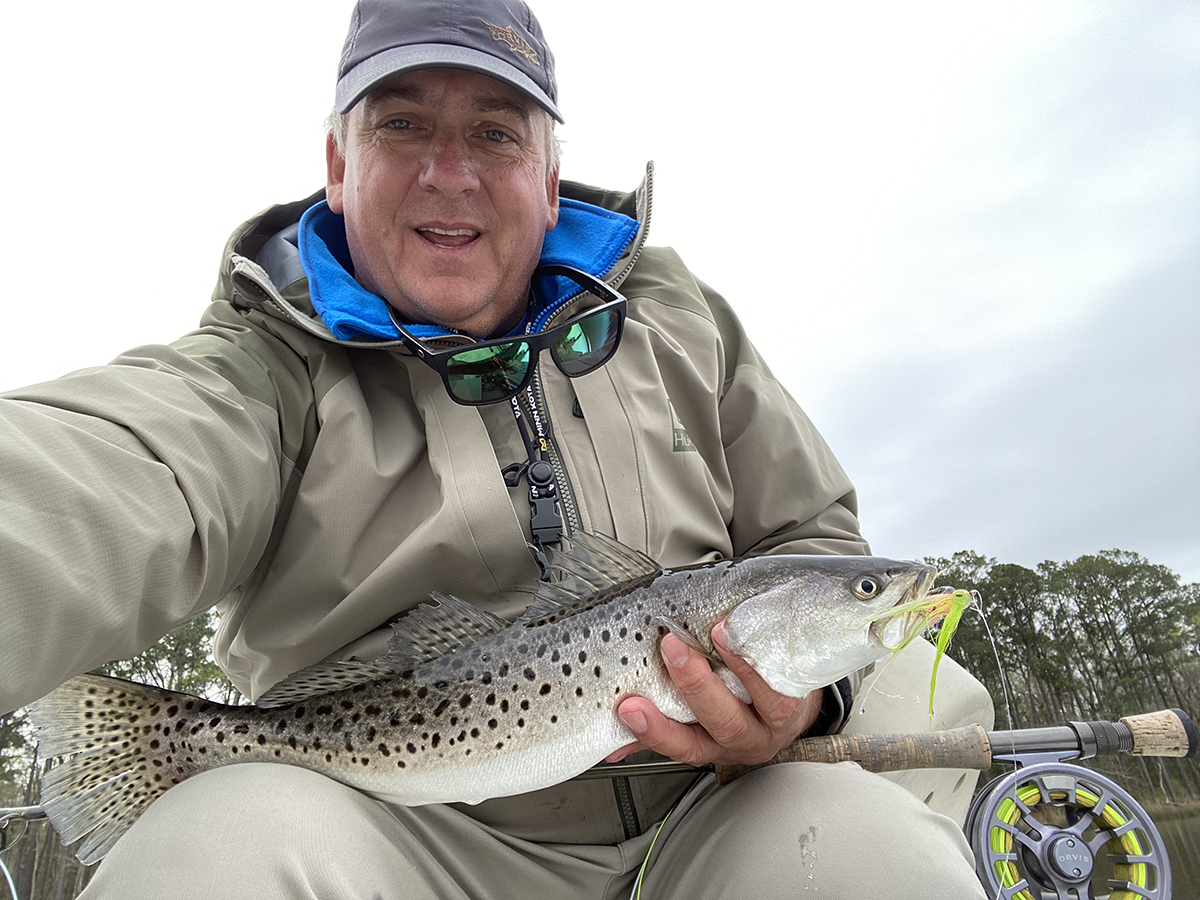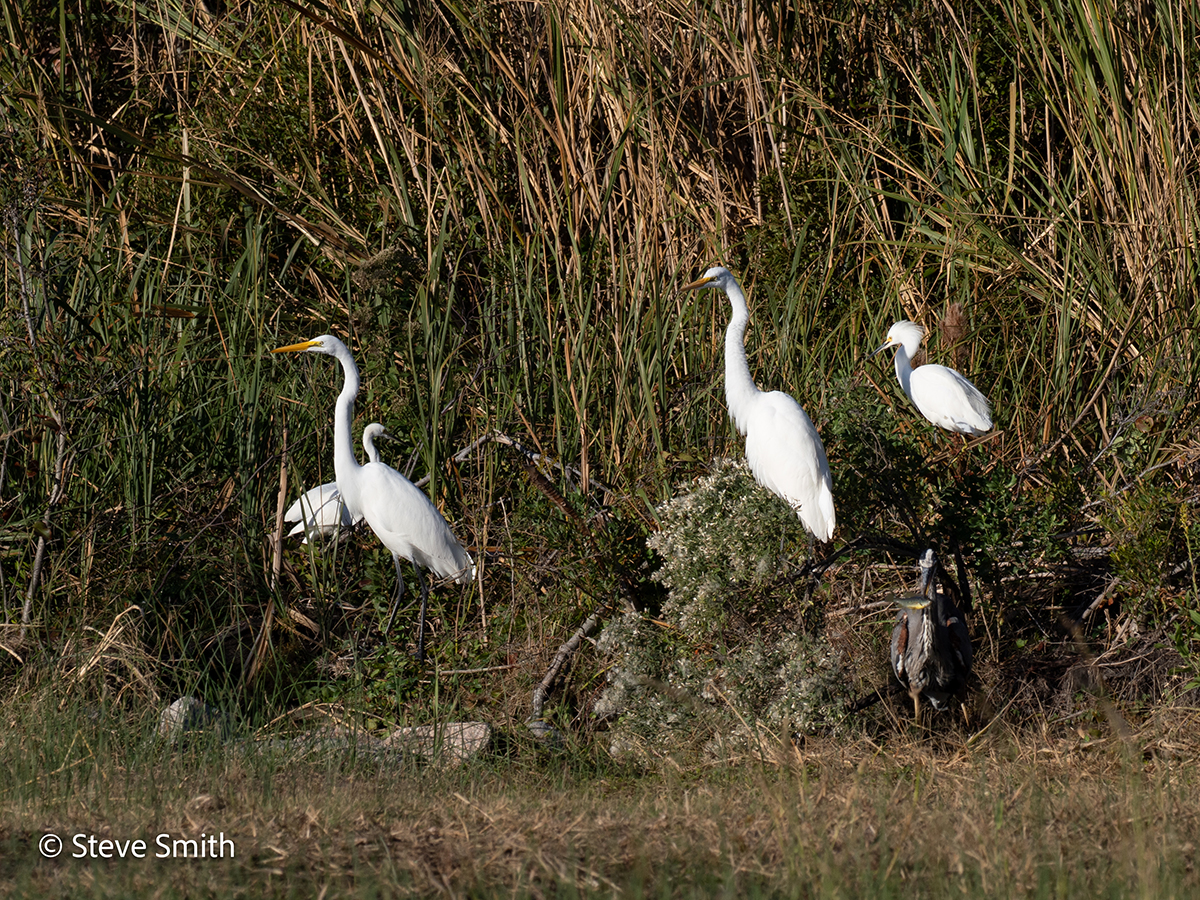
Editor’s Note: After Sam Bland retired from his position as superintendent at Hammocks Beach State Park, he joined the staff of the North Carolina Coastal Federation. While a coastal specialist in the 2010s, he would periodically write about his time in the field for Coastal Review. Now traveling the country, Bland drops a line every once in a while to share a new adventure with his readers, such as the following:
With the silent curtain of darkness kissing the horizon, we rode down the dusty ribbon of a remote dirt road in western Wyoming. The departing sun left a thin orange glow on the horizon, hanging low like a colorful fog. Straight ahead in the sky, a sliver of the waxing crescent moon grinned sideways like Lewis Carroll’s Cheshire cat.
Supporter Spotlight
Following the directions, we turned off the road and on to an eroded washboard of rocks and stones. With silent glances, we wondered if this was the right way to go. Soon, the path ended in a clearing where we parked the car. Stepping out, we immediately heard the clear sharp song of the northern saw-whet owl piercing the cool clear mountain air. Over and over, it called, beckoning.
Cautiously, we headed down the ankle-twisting cobble path, our flashlights leading the way. In the distance, we could see a faint glow of light suppressed by the walls of a nylon tent. Not far from the tent, a stand of fir trees stood tall, silhouetted against the evening sky. The door flap of the tent swung open and we were greeted by Noah Price, his face illuminated red by a filtered headlamp.
A contracted field biologist, Noah specializes in documenting the migration of small forest owl species such as saw-whets, boreals and flammulated owls. Stepping inside the dimly lit tent, there were a few chairs and a table. Neatly arranged on the table was all the accouterment necessary to band owls. A digital scale, rulers, clipboards thick with data forms, a tool box filled with banding supplies, clamping pliers, and a variety of short PVC tubes were at the ready. We — my wife Bright, and I — had ventured to this secluded location for the opportunity to observe the banding of northern saw-whet owls.
Saw-whets are one of the smallest owls, standing at only 8 inches. It is a fluffball of feathers weighing a scant 5 ounces, at the most. Although diminutive, it is a solid-looking bird with a large facial disc and stunning yellow eyes. With deadly talons, it flies the night skies searching for prey.
Even though it is rarely seen, it is one of the most common forest owls within its northern range, which includes the entire width of North America. Its breeding range includes the northern and western states, southern Canada as well as central Mexico. During the winter months, they can be found to venture into central and southern states.
Supporter Spotlight
In North Carolina, they have been documented in 31 counties and have been found wintering along the islands of the Outer Banks. High in the Appalachian Mountains of North Carolina, there is a small breeding population as well. It is listed as a threatened species in state by the N.C. Wildlife Resources Commission.

Northern saw-whet owls were long thought to be nonmigratory and remained permanent residents within their northern range. But in the early 1900s, a number of saw-whets were found dead after a severe fall storm in an area where they were not thought to exist. This was a light-bulb moment and ornithologists realized that these owls might indeed be migratory.
Many ornithologists were skeptical of their migratory movement and it took decades before research proved it to be true. To study migratory patterns and routes, banding programs were established. Using fine mist nets to capture the nighttime migrants, they banded the owls as they moved south during the fall months. The results concluded that saw-whet owls were indeed migratory.
In the mid-1960s, banding stations started using an audio lure to attract the birds. It was a game changer. Like a moth to a flame, the amplified song of a male saw-whet proved irresistible in attracting the owls. The capture rates were so impressive that this is now the go-to method for increased banding success. This was the flute-like song that we heard when we first arrived at the banding station, a recorded saw-whet song playing on a continual loop.
With their migratory nature more well-known, researchers are trying to unravel the mystery about the biology of these secretive owls. Being strictly nocturnal, these birds are experts at hiding during the day. They will seek out dense vegetation and blend in within the branches looking as if a knot on the tree.
Ornithologists have become enamored with these cute and charismatic birds with their big bright alluring eyes. Their large facial disc makes them look like a child’s cuddly stuffed animal.
Remember in 2020 when the nation fell in love with Rocky, a saw-whet owl that was roosting in a spruce tree that was cut down for the Rockefeller Center Christmas tree and trucked to New York City? Its charm undeniable, the unwittingly abducted owl became a star. The owl inspired the center to designate an owl mascot, Roxy, as their official ambassador. The plight of Rocky is also depicted in the Disney animated film “An Almost Christmas Story” as well as a number of children’s books.
Research on these owls has really accelerated over the past 30 years with the formation of Project Owlnet, a collaboration of researchers dedicated to the study of saw-whet owls. The project established standardized protocol and data collection methods to keep the research uniform for scientific integrity.

As we wait in the tent, Noah steps out into the darkness and walks toward a stand of fir trees where the mist nets are located. About 15 minutes later he returns with a saw-whet owl snuggly confined in a plastic PVC sleeve. As a cavity nester, saw-whets are familiar and comfortable in confined spaces. His headlamp creating a reddish aura, Noah went about examining the owl. Under his gentle touch, the owl calmly endured the inspection as if at a doctor’s appointment.
Each fall and spring, hundreds of researchers like Noah participate in capturing, banding and monitoring the movements of these tiny owls. In addition to banding the birds, their overall condition is evaluated. A lightweight metal band, with its own unique engraved number, is applied to the leg. The birds are then examined to record weigh, wing length, sex, age, fat deposits, and molting progress. Isotope analysis is also conducted to help determine specific nesting areas.
After the birds are released, as time goes by, information is gathered through sightings, recapture and mortality. The information is archived with the United States Geological Survey’s Bird Banding Laboratory where the data, along with recapture data, is available for researchers studying the birds.
As the most banded owl in North America, it is estimated that 400,000 saw-whet owls have worn the silver bracelet over the years. The banding helps ornithologists determine migration routes, when they migrate, peak migration, and how fast they migrate. It also establishes where they overwinter, overall population numbers, lifespan, and reproduction and survival rates. This information is essential for targeting habitat preservation along migratory corridors and wintering and nesting areas.
The data is also crucial when calculating the impact of climate change not only for the saw-whet, but for all owls. The North Carolina coastal plain is permanent residency to the great horned, barred, eastern screech and American barn owls. The short-eared owl is a winter resident while the long-eared owl is a rare winter visitor. Snowy owls are rare winter visitors during irruption years and burrowing owls are extremely rare as they have only been documented a hand full of times in the state.
Long-term variations in climate can result in more frequent severe weather events, hotter temperatures, habitat changes, drought, flooding and persistent wildfires. The impact these changes have on wildlife can be measured by what has been termed as “climate change vulnerability.” This is the risk associated with exposure to changing precipitation, temperature and severe weather events. For example, nests of ground nesters, such as burrowing and snowy owls, are destroyed by heavy rain events and melting permafrost.
Owls that are dependent on niche habitat might be forced to abandon part of their range destroyed by wildfires. It also includes their dependency on certain habitat types and their sensitivity to changing conditions along with their ability to adapt to these changes.
Some of these owls may simply adapt by transitioning to a different habitat, developing a taste for new prey or simply relocating to cooler northern regions. However, this may create a butterfly effect of competition that is detrimental to other species. Overall species populations may not decline rapidly, but they will be slowly chipped away as their habitat shrinks.
Eventually, if their ranges shift, they might be considered invasive if they out compete native species in that range. This is already happening with the expansion of the barred owl into the northwestern states and their competition with the Northern Spotted owl.
The United States Fish and Wildlife Service has concluded that their movement was significantly influenced by human activities decades ago. As such, they must be killed by the hundreds of thousands. Is this the fate that awaits other owls that might be displaced due to climate change? Historical ranges might need to be reconsidered and management practices revisited.
Since it is anticipated that owl species will be pushed further north with rising temperatures, biologists recommend that conservation practices be proactive. Conservation strategies should be directed to preservation, protection and restoration of prime habitats now rather than later. Even put out a welcome sign and embrace new diversity to the neighborhood.
Animals are adaptable, but it may just come down to how fast and intense changes occur in the future and their ability to adjust. Importantly, for the fitness of owl populations, is the impact of climate variations on their food sources. Will prey items such as rodents, insects, birds and reptiles be abundant in the changing landscape.
Under the illumination of his headlamp, Noah is finishing his checkup on the feathered patient. He blows a small puff of air onto the breast of the owl and a fine mist of powder down explodes into a crimson fog that hangs in the air. Startled, the bemused owl looks up at Noah and the two appear to share a laugh. As the feathers part, exposing the breast, Noah can determine a fat score that indicates fat reserves. Kind of like checking the gas gauge and how many snacks are in the car during a road trip.
Noah wears his passion for these birds on his sleeve like an epaulet. Enduring two months of long cold nights, Noah’s research station banded 321 saw-whet owls along with 68 boreal owls and three long-eared owls. With the owl in one hand, Noah finishes scribbling the data on a clipboard.
The wide-eyed owl stands straight, patiently awaiting its release. As we step outside, Noah asks if I would like to release the bird. I humbly accept this once-in-a-lifetime offer. Placing the owl on my hand, it holds firmly onto my finger, as if on a tree branch. I can feel its tiny talons gripping into my flesh.
Face to face, the deadly eyes of this fierce hunter shoots daggers into my soul anchoring a lasting memory. In an instant, it launches from my hand and lands on a low branch of a nearby fir tree. It gathers and composes itself, then flies off into a dark and uncertain future.







